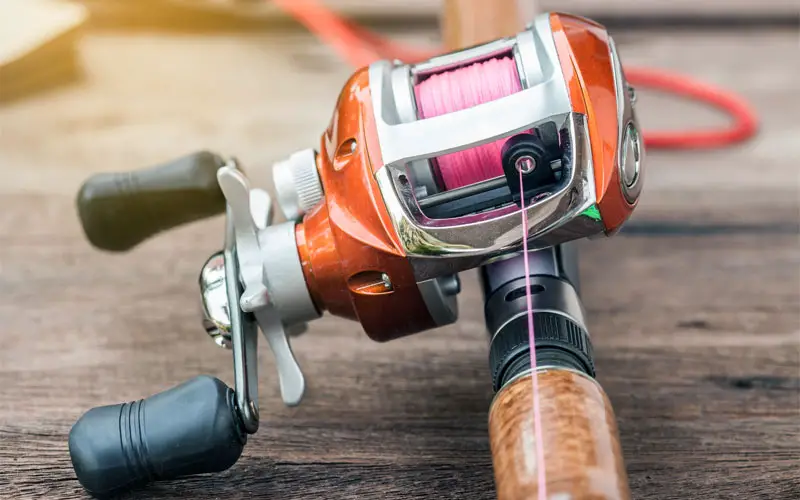For some, fishing is a hobby and, for others, a lifestyle. Gone are the days of using a simple string and hook on a stick, and the modern fishing rod comes in a wide range of shapes, sizes, and types. Along with this variety are several different types of fishing reels to go on the rod.
Chances are, you’ve used more than one reel type over the years but may not be aware of just how many are out there or what each one is best for. Here’s a rundown of nine popular types of fishing reels, what they do, and where their strengths and weaknesses lie.
Types of Fishing Reels
1. Baitcaster Reel
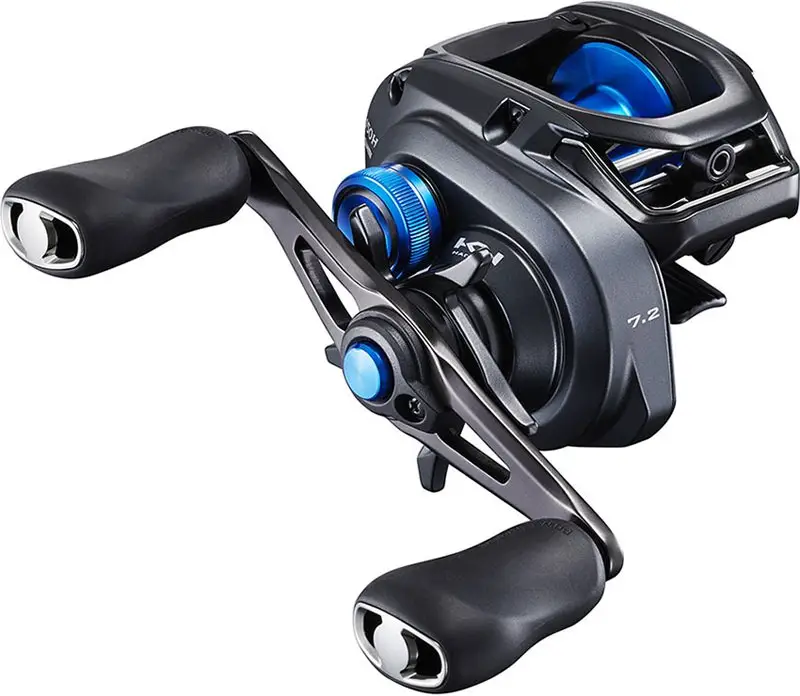
These reels are complicated and sometimes temperamental. It takes a lot of skill to master them, and beginners will often have to untangle line backlashes until they learn the proper casting techniques.
In addition, most baitcasting reels have heavy drag systems designed for going toe-to-fin with tough fish such as bass.
Another consideration is that baitcasters require a degree of calibration. You’ll need to adjust the spool tension and braking systems when switching to a different lure weight.
Between complexity and the higher price tag, baitcasters are best left for skilled hands where they’ll easily outperform any other type of reel.
See Also: 13 Types of Crab
2. Centerpin Reel
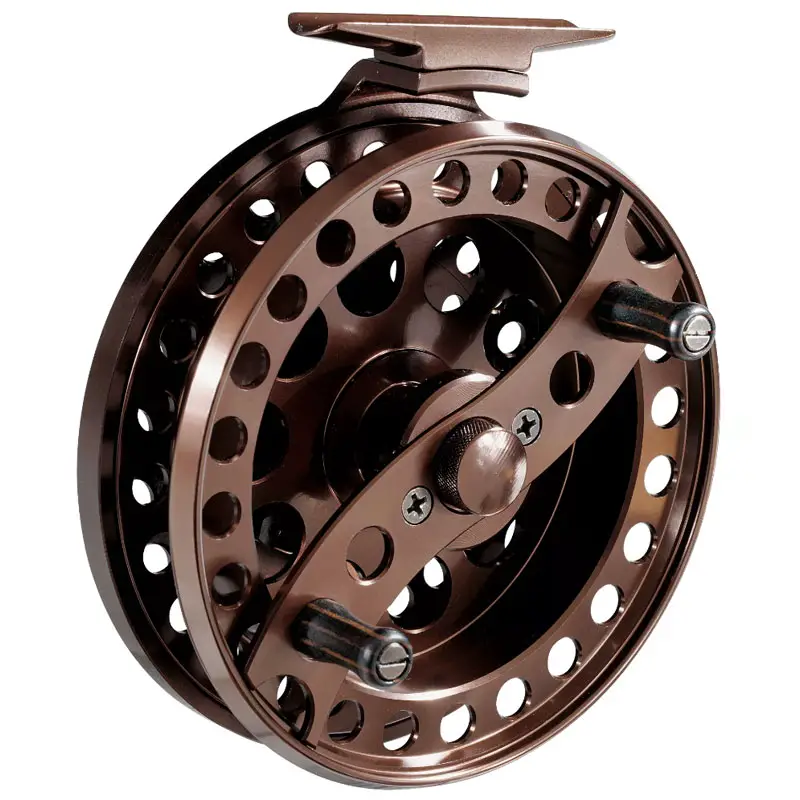
This is the most basic type of reel and consists of a spool, set of bearings, and crank. The bearings allow the spool to spin freely, and there’s no catch to hold the spool in place.
Instead, hand pressure keeps the spool from unwinding any further, while the crank (which may be as simple as a little knob) is used to wind the line.
Casting is a simple matter of flicking the rod and letting gravity and momentum extend the line, with your fingers serving as a stop when the line’s at the desired distance.
These rods are best used for drift fishing, where the line is allowed to be drawn out by the water currents. Above the hook and bait is usually a cork or bobber to monitor for bites.
Salmon and steelhead are two kinds of fish that centerpin reels work great on, although they can be used in a wide range of fishing scenarios where drift might be a desired factor.
3. Fly Fishing Reel
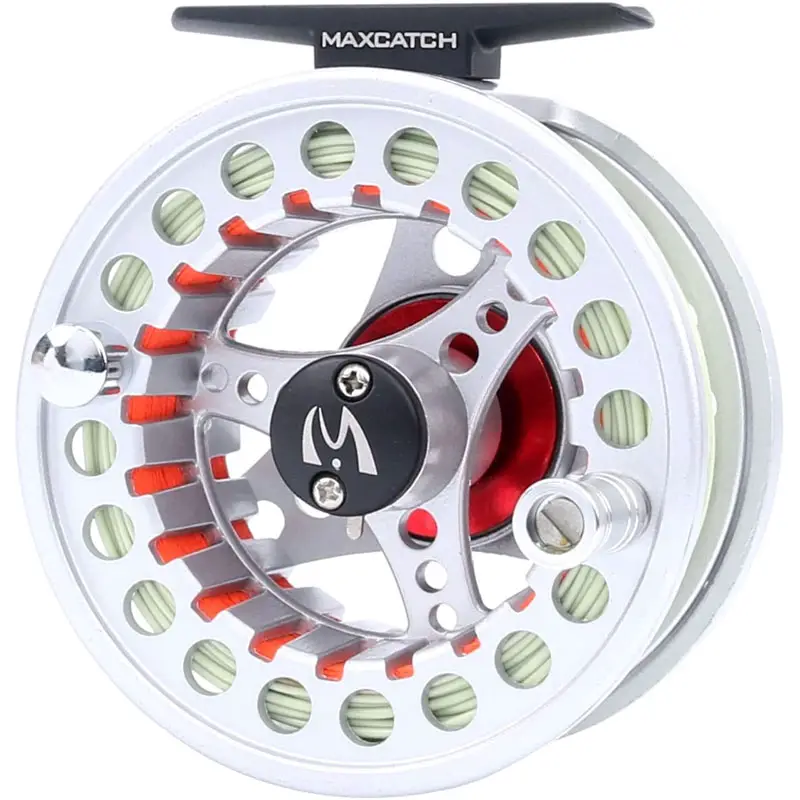
Fly fishing has become a major sport in the fishing world, and these reels are designed to be simple yet effective. On the inside, they have a clicker and, in some cases, a drag.
However, smaller fish are best caught using a fly fishing reel that lacks drag since they can put up very little resistance. The clicker is a click and pawl device which creates mechanical resistance so the line won’t backlash.
They come in a range of sizes measured by weight, with 1 being the smallest and 132 being the largest and heaviest. An experienced fly fisherman might have several reels in their box to target different sizes of fish.
4. Large Arbor Reel
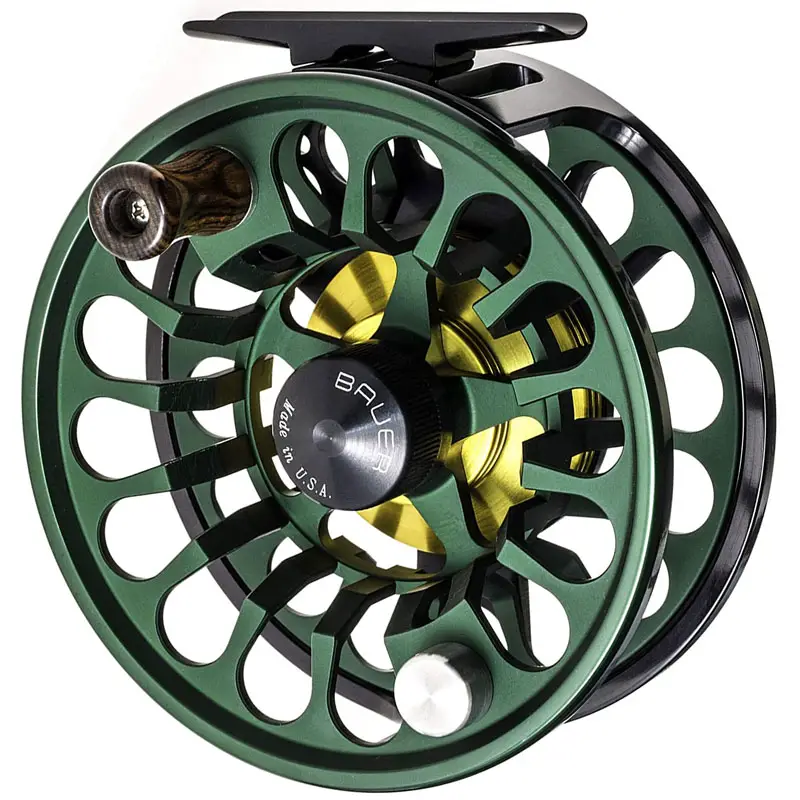
This is a type of fly fishing reel designed to use with larger fish. They tend to have a carbon drag system built in that is similar to the discs in car brakes.
When fishing, the drag knob applies pressure to the drag disc, adding tension to the line. This can not only prevent the line from drifting, but it can also make it easier to fight a big fish caught on the line.
Read Also: 11 Different Types of Lobster
5. Low-Profile Baitcaster Reel
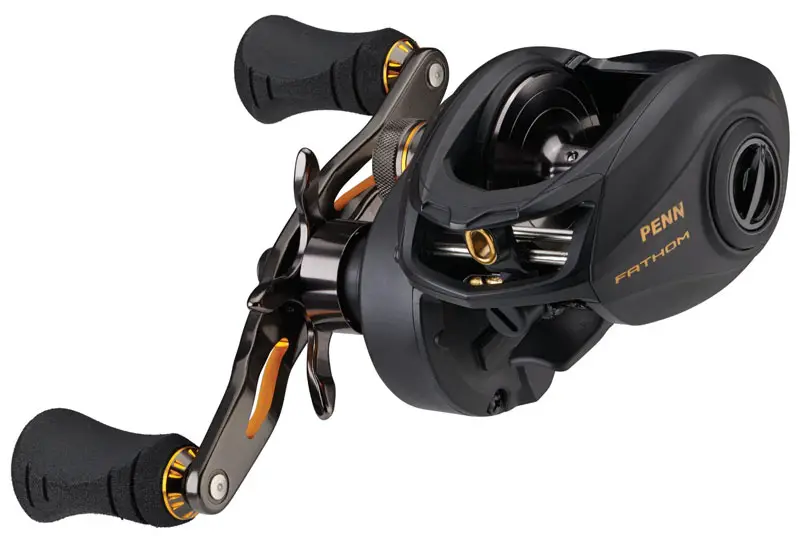
Perfect for bass fishing or working from within some form of heavy cover, low-profile baitcasters are compact and have a flatter profile. As a result, they’re able to cast heavier tackles than spinning reels but don’t function well if the tackle is too light.
6. Offshore Baitcaster Reel
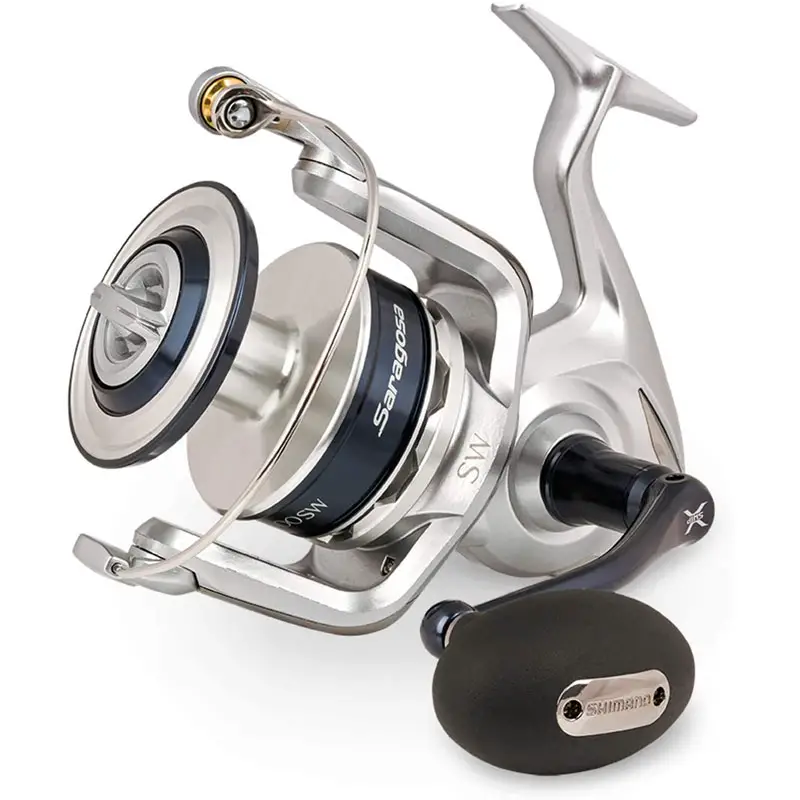
This type of reel isn’t just big in name. They’re designed for big fish from salmon to sharks and are commonly associated with deep-sea fishing. Because they’re designed to carry heavy pound test line, they’re perfect for use against large, powerful fish.
See Also: 18 Types of Caviar From Around the World
7. Spincast Reel
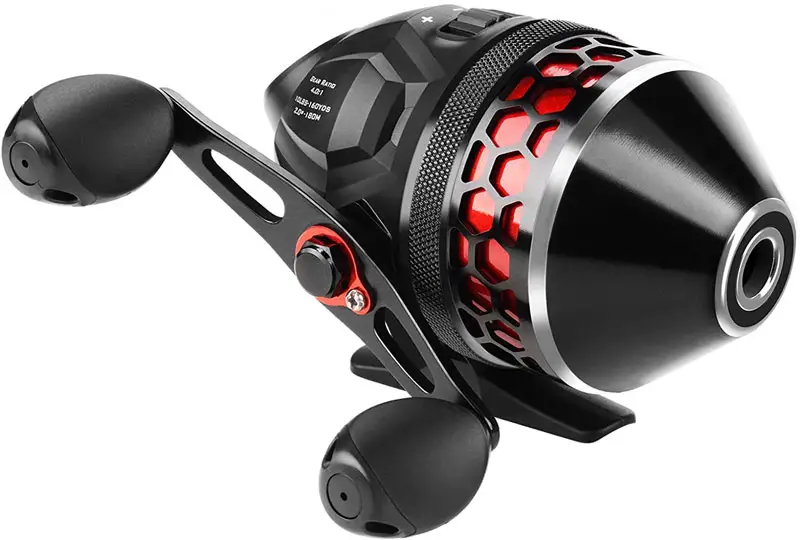
These reels are somewhat complex and have an adjustable drag as well as a push-button casting mechanism. They’re a popular default for rods, especially retractable ones.
Unlike most reels, the spool is exposed on one side and remains stationary. The button is held down when casting, and gravity simply slips the line from the spool through an opening in the reel’s housing.
Not only are these reels cheap and easy to use, but they’re viable options for most types of fish. Unfortunately, they need a heavier tackle if you want to cast a long distance. Otherwise, the line will simply unspool inside the housing and may need to be rewound by hand.
They also tend to be cheaply made and might only last a single fishing season before needing to be replaced. Finally, their enclosed construction makes it easy for water and debris to get stuck inside, which further shortens its lifespan.
8. Spinning Reel
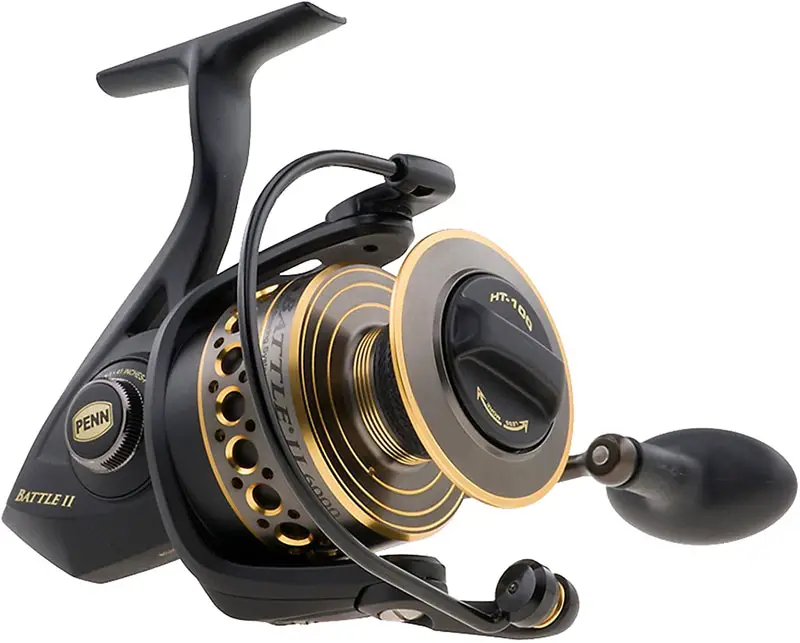
This kind of reel is a bit more complicated than spincasting reels, although they have similar functionality. The casting system includes a fixed spool, line roller, and ball.
The ball acts as a stopper, and casting involves holding the line, opening the ball, casting and releasing the line at the desired angle, then reengaging the ball. As with other reels with drag discs, the tightness of the disc is controlled with a knob on the front of the spool.
While they require some skill to master, spinning reels come in a wide range of shapes and sizes, with the size ranges rated from the small 500 to the largest 30,000. The bigger the reel, the bigger and faster the fish it can catch.
Unfortunately, the line on these reels is prone to twisting, hindering or preventing casting over time. They’re also limited to using lighter tackles, as efficiency is lost as the tackle size gets heavier.
9. Trolling Reel
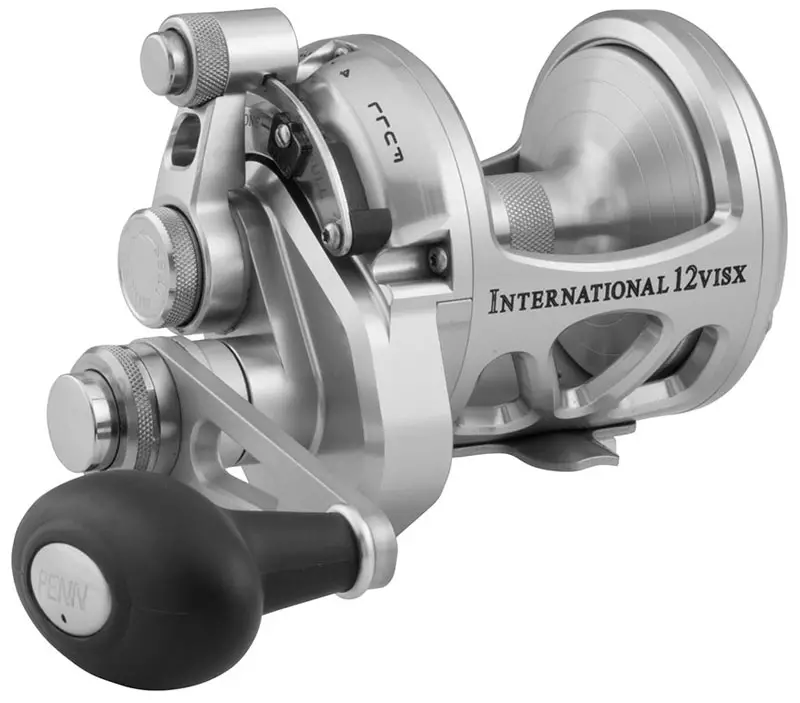
These reels are fairly simple but built to take a lot of abuse. Most often used when fishing from boats, the line is cast and drags behind the boat to attract big game or saltwater fish.
They usually include dual gear systems, allowing you to switch between retrieval speeds. Additionally, the drag systems are sometimes dual-disk or even multi-disc to make it easier to pull in large game.
Because boats are noisy and the water may affect your ability to notice a fish in the line, many trolling reels make a loud clicking sound when you’ve snagged something.
The housings are bigger to handle more line and tend to be made of sturdy materials that can withstand the harsh saltwater air.

